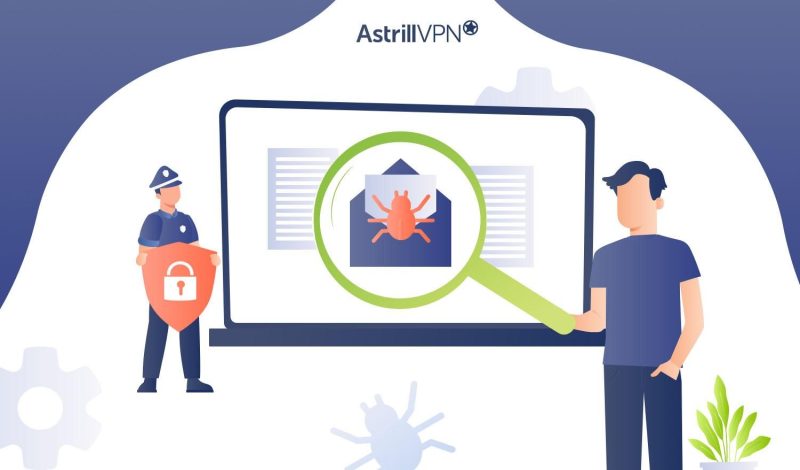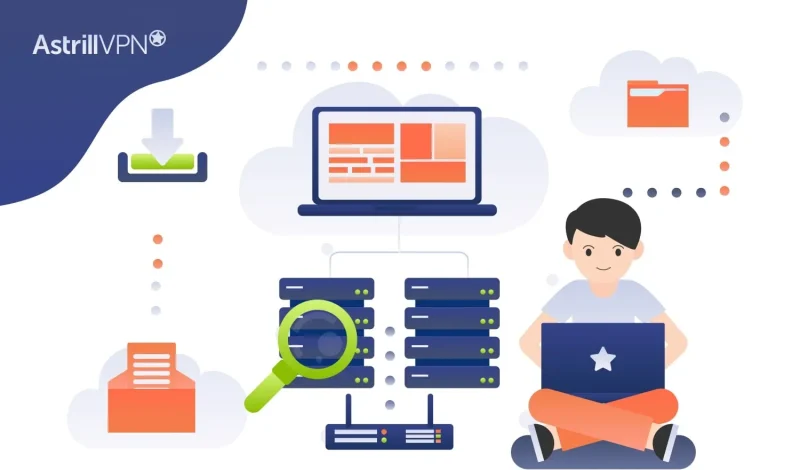What is Deep Packet Inspection (DPI) And How does it Work?

Bisma Farrukh

In today’s interconnected digital landscape, securing your organization’s network is more critical than ever. As cyber threats grow increasingly sophisticated, traditional perimeter defenses are no longer sufficient. Enter deep packet inspection (DPI), a powerful cybersecurity technique that examines the contents of data packets as they traverse your network. By analyzing packet payloads in real-time, DPI enables you to detect and prevent a wide range of threats, from malware to data exfiltration attempts. This article explores the role of DPI in modern cybersecurity, its key benefits, and how you can leverage this technology to strengthen your network defenses against evolving cyber risks.
Table of Contents
What is a data packet?
In networking, a data packet is the fundamental unit of information transmission. These digital envelopes contain the data being sent and crucial metadata about its origin, destination, and handling instructions. Think of packets as the building blocks of internet communication, enabling the efficient transfer of everything from emails to streaming video.
Each packet typically consists of two main components: the header, which carries essential routing information, and the payload, which contains the transmitted data. This structure allows networks to efficiently route packets to their intended destinations, reassembling them in the correct order upon arrival.
How does packet analysis work?

Packet analysis, a key component of deep packet inspection (DPI), involves examining the contents of data packets as they traverse a network. This process goes beyond looking at packet headers, delving into the payload itself. DPI tools intercept packets in real time, dissecting their structure and content to identify potential threats or anomalies.
Packet Capture and Decoding
The first step involves capturing packets using specialized hardware or software. These tools then decode the packets, translating raw binary data into a format that can be analyzed. This decoded information reveals the packet’s origin, destination, and contents.
Pattern Matching and Anomaly Detection
Advanced DPI systems use sophisticated algorithms to compare packet contents against known patterns of malicious activity. They also employ machine learning techniques to detect unusual behaviors that may indicate emerging threats, enhancing network security.
What is Deep Packet Inspection (DPI)?
Deep Packet Inspection (DPI) is a sophisticated network security technique that examines the content of data packets as they traverse a network. Unlike traditional packet filtering, which only looks at header information, DPI delves deeper into each packet’s payload. This advanced DPI networking technology allows for more granular control and analysis of network traffic.
DPI security tools can identify specific applications, detect malware, and enforce content-based security policies. By scrutinizing packet contents in real-time, DPI enables network administrators to gain unprecedented visibility into data flows, making it an invaluable asset in modern cybersecurity strategies.
How DPI Works: Packet Filtering and Analysis
Deep Packet Inspection (DPI) examines the content of data packets as they traverse a network. This process involves analyzing the header and payload of each packet, allowing for a more comprehensive understanding of network traffic. DPI tools use sophisticated algorithms to filter packets based on predefined criteria, identifying potential security threats or policy violations.
Unlike traditional packet filtering, which only examines headers, DPI delves deeper into the transmitted data. This enables more accurate traffic classification and threat detection. By scrutinizing packet contents, DPI can uncover malware, detect intrusion attempts, and enforce content-based security policies, making it a powerful tool in modern cybersecurity arsenals.
The Benefits of Deep Packet Inspection for Network Security
Deep packet inspection (DPI) offers numerous advantages for network security.
- By examining the content of data packets in real-time, DPI tools provide enhanced threat detection capabilities, identifying malware, intrusions, and other cyber threats that might slip past traditional firewalls.
- This technology enables more granular control over network traffic, allowing you to enforce security policies effectively and prevent data leakage.
- DPI also enhances network performance by prioritizing critical applications and mitigating bandwidth-hogging activities.
- Additionally, it aids in regulatory compliance by monitoring sensitive data transfers.
- Implementing DPI security measures significantly bolsters your network’s defense against sophisticated cyber attacks while optimizing network operations.
How is DPI used to detect VPNs?
Deep Packet Inspection (DPI) is crucial in identifying Virtual Private Network (VPN) traffic. By examining packet headers and payload content, DPI tools can detect telltale signs of VPN usage, such as:
- Encrypted traffic patterns
- Unusual port numbers
- Specific protocol characteristics
Network administrators leverage DPI security measures to enforce company policies and prevent unauthorized VPN access. However, advanced VPN services continually evolve their techniques to evade detection, leading to an ongoing cat-and-mouse game between DPI and VPN technologies. Understanding these detection methods is essential for both network security professionals and privacy-conscious users navigating the digital landscape.
Simple VPN blocks
Deep packet inspection (DPI) is crucial in identifying and blocking Virtual Private Network (VPN) traffic. While VPNs are valuable for online privacy, they can bypass network security measures. DPI tools analyze packet contents beyond basic header information, allowing them to detect telltale signs of VPN usage.
DPI can flag suspicious traffic for further scrutiny or automatic blocking by examining packet patterns, encryption methods, and destination addresses. This capability benefits organizations aiming to enforce security policies or comply with regulations restricting VPN use. However, as VPN technologies evolve, so must DPI techniques to maintain effectiveness in this ongoing cat-and-mouse network security game.
VPN obfuscation and AstrillVPN obfuscation technology
VPN obfuscation presents a significant challenge for deep packet inspection (DPI) systems. This technique disguises VPN traffic, making it appear as regular HTTPS traffic to evade detection. While DPI tools are designed to analyze packet contents, obfuscated VPNs employ various methods to blend in with regular internet traffic.
Obfuscation techniques
Standard obfuscation methods include:
- Protocol obfuscation
- Traffic shaping
- Stealth VPN protocol
These techniques make it increasingly difficult for DPI security measures to identify and block VPN connections, highlighting the ongoing game between privacy tools and network monitoring systems.
Astrill VPN’s obfuscation technology enhances cybersecurity and circumvents deep packet inspection (DPI). By disguising VPN traffic as regular HTTPS traffic, Astrill’s obfuscation makes it extremely difficult for DPI tools to detect and block VPN connections. This feature is handy in countries with strict internet censorship, where DPI networking restricts access to specific websites and services. Astrill’s obfuscation ensures privacy and anonymity and helps users bypass geo-restrictions and firewalls. When combined with other security measures, such as solid encryption and a no-logs policy, Astrill’s obfuscation significantly bolsters overall online security and freedom.
Difference between DPI vs IPS
While both Deep Packet Inspection (DPI) and Intrusion Prevention Systems (IPS) are crucial cybersecurity tools, they serve distinct purposes. DPI networking analyzes packet content, providing detailed visibility into network traffic. It examines data payloads, enabling advanced traffic management and security functions.
In contrast, IPS actively prevents malicious activities by detecting and blocking potential threats in real time. While DPI security can identify anomalies, IPS immediately thwarts attacks. The critical difference lies in their approach: DPI tools offer comprehensive analysis, while IPS emphasizes rapid threat response.
Understanding these distinctions helps organizations leverage the benefits of deep packet inspection alongside IPS for a robust security posture.
Examples of deep packet inspection
Deep packet inspection (DPI) has numerous applications in cybersecurity and network management.
- For instance, DPI tools detect and prevent malware infections by analyzing packet contents for suspicious code or known threat signatures.
- DPI security measures also help identify and block data exfiltration attempts, protecting sensitive information.
- In networking, DPI enables quality of service management by prioritizing certain types of traffic.
- Additionally, DPI facilitates content filtering, allowing organizations to restrict access to specific websites or online services.
Understanding these examples highlights the benefits of deep packet inspection in enhancing network security and performance.
Top Deep Packet Inspection Tools
Several of the best DPI tools stand out regarding DPI networking and security.
- Wireshark, an open-source packet analyzer, offers comprehensive DPi security features.
- Cisco’s Firepower provides robust deep packet inspection capabilities integrated with next-generation firewall functionalities for enterprise-level solutions.
- Another notable option is Palo Alto Networks’ Next-Generation Firewall, which combines DPI with advanced threat prevention.
- For those seeking a dedicated DPI solution, nDPI offers high-performance packet classification.
Understanding the difference between DPI and IPS is crucial. While both enhance network security, DPI focuses on content analysis, whereas IPS actively prevents threats. Implementing these tools can significantly boost your network’s defense against sophisticated cyber threats.
DPI and government censorship
Deep packet inspection (DPI) plays a controversial role in government censorship efforts. While DPI security can protect networks from threats, it’s also used to monitor and block internet content. Some governments employ DPI tools to filter websites, track user activity, and restrict access to information, raising concerns about privacy and freedom of expression online.
Critics argue that the security benefits of deep packet inspection don’t justify its use for censorship. Unlike an IPS, which mainly blocks malicious traffic, DPI can be used for content-based filtering. This critical difference between DPI and IPS highlights the potential for misuse. As DPI technology advances, the debate over balancing security and freedom continues.
Conclusion
Deep packet inspection plays a crucial role in modern cybersecurity. By examining network traffic at a granular level, DPI empowers you to detect threats, enforce policies, and optimize performance. While privacy concerns exist, responsible implementation can balance security needs with data protection. As cyber-attacks grow more sophisticated, DPI will likely become an even more essential tool in your security arsenal. Consider leveraging DPI’s capabilities within your organization to stay ahead of evolving threats. With a thoughtful approach, deep packet inspection can significantly enhance your ability to safeguard critical systems and data in today’s complex threat landscape.
FAQs
Several tools are available for deep packet inspection (DPI), including dedicated DPI security appliances and software solutions. Some popular options include Cisco’s Next-Generation Firewalls, Palo Alto Networks firewalls, and open-source tools like nDPI.
While Wireshark is a powerful packet analyzer, it’s not designed explicitly for DPI. However, it can be used with DPI tools to analyze captured packets in greater detail.
DPI is increasingly necessary in modern cybersecurity strategies. It provides crucial insights into network traffic, helping detect and prevent sophisticated threats, ensuring compliance, and optimizing network performance. However, its use must be balanced with privacy considerations.


No comments were posted yet